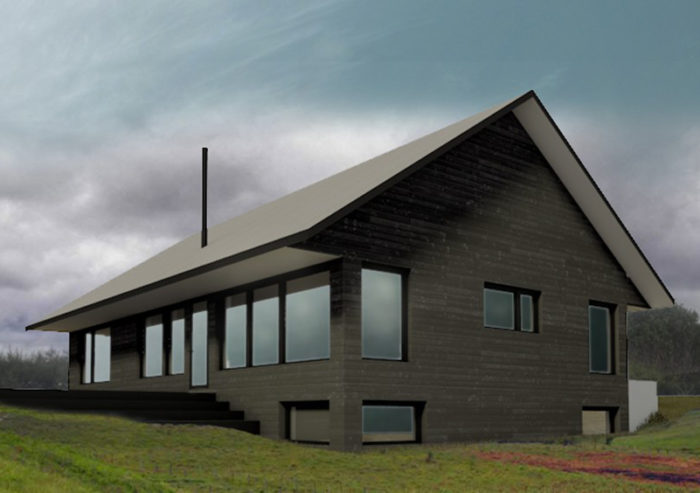
Image Credit: Kent Earle
This is something I’ve been wrestling with since we decided on building a superinsulated, highly energy efficient home. And really this is something that I think a lot of builders, architects, and designers of eco- and green homes have been debating since the Passivhaus concept came to North America in the past few years.
When we initially got going on our project, I was pumped on the possibility of “not needing an active heating system,” as Passivhaus enthusiasts have touted. However, that really is not quite true. Although many of these Passivhaus homes in Europe don’t necessarily use a boiler or furnace as we do in Canada, they do still technically require some way of heating.
Often that is a heating coil attached to the existing ventilation unit that warms the incoming ventilated air. For our house, the possibility of using such a system simply made no sense.
Passivhaus often justifies some of its standards on “user comfort.” Certainly, I agree that user comfort is critical. However, in order to meet some of the rigorous standards of Passivhaus, people have tended to sacrifice comfort to meet the certification. For example, in our project, yes, we could have used this method of heating as a secondary option, but it would not be sufficient to meet all of our heating needs despite the superinsulation. Furthermore, we need a thermal mass (concrete floor) to take advantage of the solar gains to cut down on our heat load.
Those of you who have walked around on a cold concrete floor know that this is pretty uncomfortable (as a physiotherapist, I cannot count the number of people I see who complain about knee, back, and foot pain due to walking on concrete floors at work). That being said, a warmed concrete floor is very pleasant, and strangely comfortable.
Given that we wanted a concrete floor for both thermal mass and aesthetics, it made no sense to me not to use in-floor hydronic heat. In this case, we had to choose user comfort over Passivhaus standards.
Strict energy limits are tough to meet
Another major criticism of the Passivhaus standard concerns the annual source energy limit and the annual heating/cooling consumption limit. These standards are very strict, at 120 kWh per square meter per year and 15 kWh per square meter per year. But is this possible in a very cold Canadian climate?
Indeed this has been shown to be possible in a handful of projects in Canada. But not that many. Why is that? Recently we’ve run our numbers through the HOT2000 software, a Canadian tool for energy-efficient homes used to calculate energy consumption. It’s not as thorough as the PHPP Passivhaus software, but it’s pretty good, and it’s a lot cheaper to have done.
OK — so here are our numbers:
House size: 1,240 square feet (main floor) + 1,240 square feet (basement) = 2,480 square feet of treated floor area = 230 square meters of treated floor area.
Estimated annual space heating requirement: 7,159 kWh (or 31.13 kWh/m2/year).
Estimated annual electrical space heating (not counting expected wood stove use): 2,342 kWh (or 10.18 kwh/m2/year).
Estimated annual energy use for domestic hot water: 3,409 kWh
Estimated annual energy use for appliances: 8,760 kWh
Total annual energy use: 19,328 kWh (or 84.04 kWh/m2/year).
Wood heat will be important
First, let me explain a couple things. One, we expect to use our wood stove a lot in the winter. I love a wood fire; there is something incredibly comforting about watching wood burn.
Two, I do think that the annual appliance use is on the high side, and I would also argue that our total space heating is also a bit high when comparing it to the Mill Creek NetZero house, an eco-house project using the same wall system in a similar climate.
Nonetheless, let’s give these numbers some context:
Our home’s projected annual energy use for space heating = 31.13 kWh/m2/year
Our home’s annual energy use for space heating (not counting wood stove heat) = 10.18 kWh/m2/year. Compare this to the Passivhaus limit for annual space heating of 15 kWh/m2/year.
The average Canadian home’s annual space heating use is 137.2 kWh/m2. (Holy crap, that’s high!)
OK, so you can look at the comparison numbers I’ve provided above for Passivhaus and the average Canadian home versus our place at 31.13 (overall heat requirement) and 10.18 (electrical space heating requirement). Both of these numbers are a lot less than the Canadian average. I’ll use the 31.13 number because it is the highest possible use we would need in an extremely cold year without using any wood heat. That is 77.3% less than the average house in Canada! Pretty awesome! And yet, it is twice as high as the Passivhaus standard!
Superinsulation and lots of south-facing glazing
I’ll remind you that we are using the following: R-100 ceiling, R-56 above-grade walls, R-28 below grade walls, and R-28 under-slab insulation. We are also having significant south glazing and minimal north glazing. We will be installing the highest efficiency fiberglass windows and we expect the airtightness of the house to meet the Passivhaus standard of 0.60 air changes per hour at 50 pascals.
The bottom line here is that Saskatchewan is a lot colder than Germany. The number of heating degree days in Germany in 2014 was 3,100. The number of heating degree days in Saskatoon in 2014 was 6,035. Well, that’s about twice as much, which would account for our need for twice the heating energy – makes sense! Therefore, I have a hard time understanding how the standards for a German Passivhaus can be applied to a very cold Canadian climate.
If we look at our expected total energy consumption (84.04 kWh/m2/year), however, we are actually significantly lower than the Passivhaus standard of 120 kWh/m2/year. [Editor’s note: The Passivhaus limit of 120 kWh/m2/year refers to total source energy, not site energy. For a discussion of the difference between source energy and site energy, see Understanding Energy Units.]
This raises the question: In Germany, what accounts for the 105 kWh/m2/year difference? Is their appliance energy use and hot water use that much higher? Or is this particular standard higher to account for the larger homes and buildings that are typically built with Passivhaus?
Anyway, what do these numbers really mean, except to compare apples (Germany) to oranges (Saskatchewan)? We weren’t going to be pursing Passivhaus certification anyway. (The approximate price tag for certification is $10,000, and I’d rather put that money into solar panels). But I think it provides an interesting discussion.
A number I can live with
In the end, we will be building a highly efficient, superinsulated house that will consume about 75% to 80% less energy than the average Canadian house. We truly won’t know our overall energy consumption until we actually live in the house, so all of these numbers are just estimates.
Yes, you can build a “true” Passivhaus on the prairies, but you’d be looking at making huge financial investments and sacrificing comfort to meet the standards.
I’m reminded of a discussion I had with a local energy efficient home builder recently. He said: “Anyone can build an extremely energy-efficient house with enough money. But to build one on a budget — now that is something impressive.”
In the end, we are building on a budget, which should come in at or below the cost of building your average stick-framed house and our energy bills (100% electric) should be in the range of $100 per month. I think I can live with that.
Kent Earle and his wife, Darcie, write a blog called Blue Heron EcoHaus. The blog documents their journey “from urbanites to ruralites,” as they plan to build a net-zero superinsulated house on the Canadian prairies.
Weekly Newsletter
Get building science and energy efficiency advice, plus special offers, in your inbox.





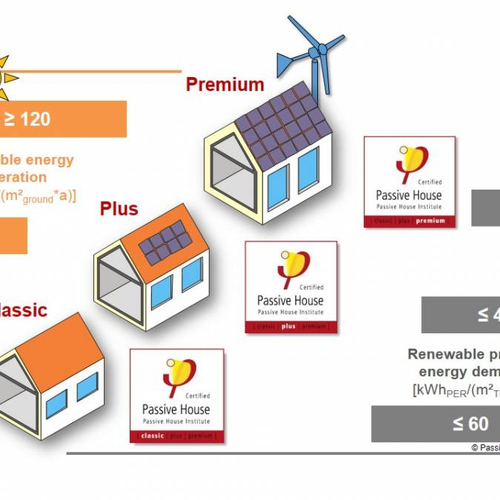
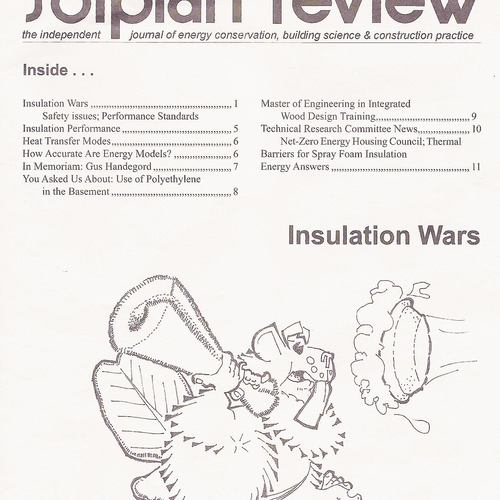
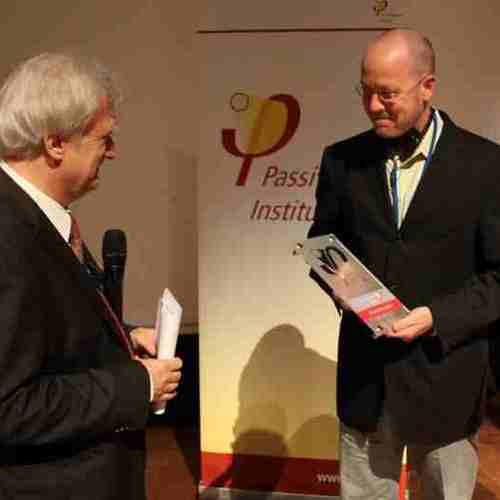
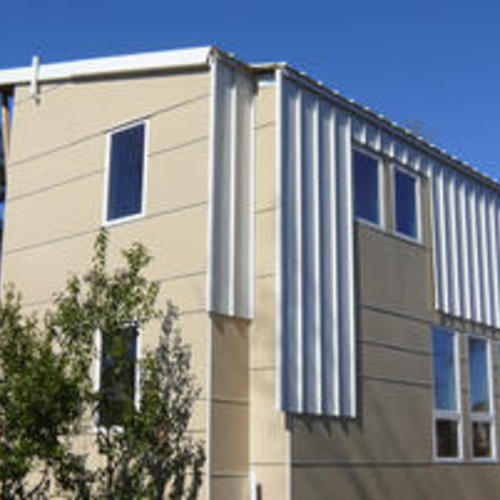






14 Comments
Given that the Passive House
Given that the Passive House was pretty much invented in Saskatchewan this article resonates. https://www.greenbuildingadvisor.com/blogs/dept/musings/forgotten-pioneers-energy-efficiency
It's a bit silly & ironic...
It's a bit silly & ironic that the Passivhaus concept was based in large part by experimental Canadian midwestern superinsulated houses like the Saskatchewan Conservation house (https://www.greenbuildingadvisor.com/blogs/dept/musings/forgotten-pioneers-energy-efficiency), adding energy use standards more relevant & appropriate to Germany than the Canadian midwest.
Overdoing the south facing glazing to meet a somewhat arbitrary energy-use standard more appropriate to Germany is likely to result in some serious comfort issues in Saskatchewan- as much or more so in summer as in winter. The outside design temps are far more extreme than in Europe in both seasons, and the solar gain in summer (even from indirect light) is higher. For the large east facing view windows on this house it would be appropriate to use a heat-rejecting soft-coat low-E window, but it's probably a custom order to get that on a triple-pane. The summer sunrise could be akin to waking up in the sauna unless shaded from the exterior (which kinda kills the view.)
For an all-electric house on Saskatchewan high-carb grid there is a lot to be said for site sourced electricity. This policy piece is a little bit dated, but the fundamentals are still pretty similar.
https://www.policyalternatives.ca/sites/default/files/uploads/publications/reports/docs/SK%20Transforming%20Sask%20Electrical%20Future%20I.pdf
The wind resources are pretty good there, but as yet undeveloped. It'll take real policy support to really get there. The Boundary Dam carbon capture & re-use/storage demonstration coal project in Saskatchewan is pretty small in scale, and uneconomic even WITH the local oil industry market to sell the captured CO2 into. Any site-source kwh from PV in Saskatchewan currently offsets a more atmospheric carbon than in most parts of N. America.
(Funny that we referenced the same GBA article on the Conservation house! :-) I didn't refresh the page before posting.)
Lively Debate
That blog/article from 2009 was quite the lively debate between Martin and Dr. Feist. It is apparent from that exchange that there is a disagreement between the two parties and approach to energy builds. This was the first time I have read it and been made aware that such an exchange even existed but it now sheds a light on why there was a negativity towards PassivHaus whenever it was brought up on this forum.
PassivHaus is optional and like LEED, Zero Energy, Energy Star, Passive House US, etc., these are volunteer programs. The US offspring Passive House is 100% voluntary and now is climate specific so a Zone 3 climate will require different standards than a Zone7 climate. It's NOT a one size fits all approach. Since 2015 PHIUS developed specific standards for specific climate zones. Either way, it's a scientific approach that is voluntary. Agree or disagree with it, that is up to the end user but the end goal is to create energy efficient homes and reduce the fossil fuel and energy use of the home.
Energy accounting of PHIUS rev. 2 (response to Peter L, #4)
PHIUS is still wedded to the fiction that all grids in N. America have the same carbon footprint and same thermal efficiencies when looking at their source energy and source carbon emissions factors, discussed at some length in the comments on this blog:
https://www.greenbuildingadvisor.com/blogs/dept/green-building-blog/new-passive-house-rules-take-effect
The various North American grid regions have nowhere near the transmission capacity to make it all one machine, and heavy-hydro generating areas such as Washington State or Quebec are net exporters of electricity to the regional grids, importing effectively none. Using the same source fuel multiplier for a house in Quebec or Washington as house in West Virginia, Wyoming or Saskatchewan has no good rationale. If the stated goal is atmospheric carbon emissions it only becomes rational if PHIUS uses more current datasets than 2007, and uses smaller grid region areas. It simply makes no sense for somebody in WA, where the fossil fuel component to the grid power is all but nonexistent, to be using the same factor in their source fuel calculation as somebody in WV, where coal is king when it comes to power generation. It doesn't to the world a bit of good to make someone in WA spend money to meet the fictitious goal- it only wastes capital.
Also, a house with PV in WV is offsetting quite a bit more carbon than is credited under the new PHIUS standard, with no clear rationale.
These observations may be mistaken by some as negativity, but they are intended as constructive criticism. For the standard to have a future it has to become rational, and true to it's stated goals. Applying out-of-date, un-nuanced, and inaccurate accounting of source energy based on reality is not really going to fly, since it undercuts the carbon reduction goals of the standard while increasing the cost of meeting the standard in low-carb grid region. Insisting on using the same source energy factors in a low-carb grid area is merely pretending to cut carbon emissions, whereas it accomplishes nothing of the kind. This is a serious flaw, but one that can be resolved.
Thanks for posting this thread
Sometimes when you think too much you miss the obvious, i posted a thread asking how to calculate how much energy a passivhaus would allow at 15kW requirement, i got no concrete answer, but after reading how you did it it made possible many calculations that i could compare that i have been wanting to do for a while.
My over 100 year old house currently uses 26.2x in heating what an equivalent passivhaus would use, down from 37.3x when i moved in.
Lloyd
It's a small world. Before Oliver Drerup went on to build the Saskatchewan house he was my english teacher.
Peter L
The programs are voluntary now, but that's not what their backers want. Passive house openly lobbies to get their standards incorporated into building codes, and we have seen blogs here detailing how municipalities use Leed as a tool to mandate water conservation.
There are very few you couldn't accuse of empire building.
Heating a Passive House
The author starts off with the premise that Passive House in Germany does not need an "active heating system" then speaks about the standard based on using the HRV ducting for heat distribution. This is not and has not been the case for PHI developing the standard so good to get that out early. Who ever gave that info to Kent was over selling or misinformed.
If one wants to heat their house with wood thats great, I use wood exclusively in my own home for 20 years (it's getting old). But I would not want to design a house to over rely on wood if it was for the long term. We are having a very cold spring after a very cold winter and I am fresh out of anything to burn. And air particulate pollution is very real issue in most places.
Since it was not mentioned I assume the house was not modeled in the PHPP energy model. If it was the designer would quickly realize the overhangs on the south windows will not receive very much solar gain in winter if the rendering is correct. In fact depending on the glass installed U-value it may be an energy loser. Same with too much thermal mass as it's harder to get direct sun on a mass floor than you would think with carpet and furniture.
Many folks build using passive house principles w/o certification but the principles are still there, and work pretty damn well when understood. It is about achieving a balance and putting money where it works rather than geral "pretty good" assumptions.
Constructive Criticism
Dana,
I am sure that PHIUS is aware of the issue you brought up. The new standards were implemented a few months ago. Prior to that it was a "one size fits all" approach to achieve PH certification. PHIUS saw the need to modify and change and they did so accordingly. PHIUS will probably see updates and modifications as time goes on.
The phrase "constructive criticism" is a hated phrase in most work environments because "criticism" is a personal attack. Sugar coating it doesn't lessen the way impact. I don't know if you are married or not but if you approach your wife or girlfriend and tell her, "honey, I am going to give you some constructive criticism...." Good luck with that scenario and hope you don't mind sleeping on the couch.
There are ways to talk or discuss about disagreements but slamming the entire PHIUS movement because it is not 100% infallible, hurts the entire green building movement. People are people and there is bias out there and disagreements are not always 100% scientific.
PHIUS has modified its standards and continues to advance the green building movement and standards. The PH standard is still the worlds toughest standard for energy efficient construction. If one deigns and builds a PH they can be assured that the home will perform the best since it is a scientific approach. I have yet to hear or read of someone with a certified PH complaining about the house being inefficient or uncomfortable to live in. On the other hand I have read and continue to read on forums like this of homes being uncomfortable and underperformed because the homeowner used an unscientific approach to designing and insulating their home.
I do wish to clarify the
I do wish to clarify the point made by Mr. Michler in regards to his comment in regards to Passivhaus not requiring an "active heating system". My simple intention with this statement was meant to reflect the layperson's (of which I was and am to a large degree) when reading and first learning about Passivhaus. Martin Holladay has written about this particular statement previously, including these two posts:
https://www.greenbuildingadvisor.com/blogs/dept/musings/passivhaus-beginners
https://www.greenbuildingadvisor.com/blogs/dept/musings/passivhaus-buildings-don-t-heat-themselves
This information package from PHI Canada also draws on similar ideas although perhaps not stated as bluntly as I wrote in the above article (http://canphi.ca/wp-content/uploads/2014/06/download_complete_PH_Brochure.pdf). Nonetheless, oversimplifying, as one does, the message of "no active heating" does come across - at least to a beginner like myself in the early stages of deciding on the type of house we wanted to build.
My criticism is certainly not that of building an energy-efficient house, as I passionately wish to make ours as efficient as we can afford (while also balancing the aesthetics of space and function), but of the at times obsessive bias towards Passivhaus as the end all and be all of excellent energy efficient design. I think GBA has been an great source of tempering this viewpoint.
As we started looking towards actually creating a "true" Passivhaus, and going down the road towards it, the economics in order to meet the criteria simply did not make sense. Especially when we could do other things such as solar panels to make very good energy gains in other areas (but not recognized by Passivhaus certification).
I would also like to clarify for Mr. Michler, that our location in Saskatchewan is exceptionally sunny throughout the year with overheating in the winter being a serious potential issue. The sun sits very high in the sky in the summer and very low in the horizon in the winter. Extensive solar modelling was utilized to size the overhands in an effort to optimize solar gains in the winter but negate them as much as possible in the summer. Time will tell if this actually worked or not!
Also for Dana Dorsett, we did go with a heat rejecting coating from Duxton Windows for the east and west windows.
Further, Mr. Peter L. also noted that there are now recently different climate zones for Passivhaus US (to my knowledge not yet in Canada). I've been hoping these would be developed as these simply make sense (as I hoped my article would reflect the frustration of trying to meet a German standard in a non-German climate).
Finally, as for carbon footprint and grid-based electricity. In Saskatchewan, our power plant is largely coal and natural gas based. Building a purely all-electric home and then using coal and natural gas based electricity for a "green" home did not sit well with me. As such, being able to offset all or nearly all of our meagre energy needs with PV panels was very important to us - more so than meeting the Passivhaus standard.
A few (unasked for) suggestions.
Firstly, congratulations. Everything about the house and approach are very sane. I would suggest that the appliances energy demand at over 8000kwh year is strange. It is greater then either the heating or domestic hot water demand. Do you have a super computer? Our house has the same zone as Calgary, is 4 times as large at 10,000sq ft, has an average of 12-20 adults in residence and uses about 4000kwh per year for appliances (all solar off grid). So I suspect the figure you are using is just average appliance house usage imported into an energy calculation program. Your sq ft heating projections are probably accurate, domestic hot water demand looks high...if you are conscious (and you are) then less than 3000 per year.
Your R values are already quite impressive and as with all cold climate super insulated houses the only low hanging fruit left are the windows. R-30 exterior closing window shutters would probably bring you to true passivhaus numbers. Run it through your program making your windows disappear to see what would happen. They can function as full shading in summer (or anytime of year) and they can be closed 16 hours a day in winter. Paint the interior sides white and you will brighten your night time ambience rather than having jet black night windows losing heat all night. As I sit typing facing south in front of 80 sq ft of window I am nicely shaded by the awning like top hinged r-30 panels on the outside. Saskatchewan is a "special" climate that may require "special" innovations. I do it. And it may catch on. (see Thorsten Chlupps Alaskan attempt at passivhaus with insulated shutters at 64 degrees latitude)
Constructive criticism is not hostility. (Response to #9)
Yes they looked at it (read the discussion I had with Graham Wright on the link), and they agreed amongst themselves to use a single number despite the fact that has known and sometimes very large variance with the facts. Pointing that out in no way diminishes the value of everything else they have brought to the table, but willful misstatements of fact that subvert the stated goals is a problem.
This is in no way "...slamming the entire PHIUS movement...", nor is critcism of the standard "...a personal attack...". (Who is the person being attacked?) It's important for the future of PHIUS that it's underlying accounting be factual or it will be rendered invalid. The next update is in 2018, and I sincerely hope they take this issue head-on to come up with a better plan.
The rate at which the grid is evolving is accelerating rapidly. Graham's explanation of the reasons behind the one-number-for-all approach do not hold much water. The universal number chosen based on 2007 data was not anywhere near valid even as a national average at the time of the 2015 release date, and will be even less valid by the anticipated 2018 revision. It's not as if there is insufficient public data to have made the adjustment. The methodology on the source fuel accounting is fundamentally flawed and needs fixing. Pointing that out is NOT the same as saying the entire standard is flawed. It's just disappointing that they didn't do a better job of it on the 2015 release, since it seemed as if they were intending to correct many issues like that.
Grid regions within the US & Canada are larger than European regions, with more divergent climate factors within the continent than even the North American averages and European averages that drove the split between PHI and PHIUS. Just as the one-number used in the European model is not valid in the US, differences in the large grid regions of N. America need to be recognized. Sacrificing that on the altar of simplification doesn't quite cut it, given just how divergent the large grid areas are in both carbon emissions and climate.
Call it nit-picking if you like, but it's a pretty big nit, and it's getting in the way of doing the right thing for true carbon emissions reductions. But it's a mistake to construe objective criticism as hostility. La aritmetica non è un'opinione. Do the math reasonably correctly and it'll just work.
Lessons from the Saskatchewan Conservation House
A friend recently shared a paper submitted by Rob Dumont presented at the 4th Annual SCSCI conference in 1978, wherein he and a number of colleagues nailed the problem with this project. Their paper was a comparative performance study based on measured data from the Saskatchewan Conservation House, located in Regina, and another passive solar house located in Saskatoon. Here's the relevant excerpt:
" Note that the Saskatoon residence, although possessing a larger south facing window area [32.5m2], requires a considerably greater amount of auxiliary heating (~75 GJ/yr) than does the Regina residence (~5 GJ/yr). [South facing window area: 11.7m2.] This extra heating requirement can be attributed to two factors; first, the Saskatoon residence has too great a window area for the thermal storage capacity of the house, and only a fraction of the passive solar heat gain can be successfully absorbed; second, the heat loss from the Saskatoon house is considerably greater than that of the Regina house; this is in large part due to the amount of unshuttered glazing. By reducing the glazing area of the Saskatoon residence one could remedy the latter problem considerably." Rob Dumont et al.
[Note: I inserted the window area numbers above in square brackets to clarify the large 3:1 ratio between south window area of these two projects.]
While this project looks great and the client/author sounds happy with his choices, the architect makes the same ‘mistakes’ that were made on the Saskatoon project in Mr. Dumont’s comparison above: WAY too much glazing! Never mind Passive House/Passivhaus – it looks like the goals shifted for this project – and that is ok. The focus of the discussion here should be on design choices and their impact on performance, not heating degree-day differences between Germany and Canada. Simply stated: this project chose more glass over better performance.
Some day the lessons from the Saskatchewan Conservation House may actually be learned… Kudo’s for attempting to build a high performance house, even if you did miss the ‘Haus’ targets your blog name suggests you aimed for initially?
Response to Bronwyn Barry
Bronwyn,
A lot of people recognized the drawbacks of the passive solar approach in the early 1980s. At that time Steve Bliss was an editor at Solar Age magazine; when I interviewed Bliss a decade ago, he reminisced: “These passive solar houses just didn’t work in New England. ... If you reduce the amount of glazing, you reduced a lot of your problems — overheating in the summer and excessive heat loss in the winter.”
For more of his reminiscences, see Solar Versus Superinsulation: A 30-Year-Old Debate.
Log in or create an account to post a comment.
Sign up Log in